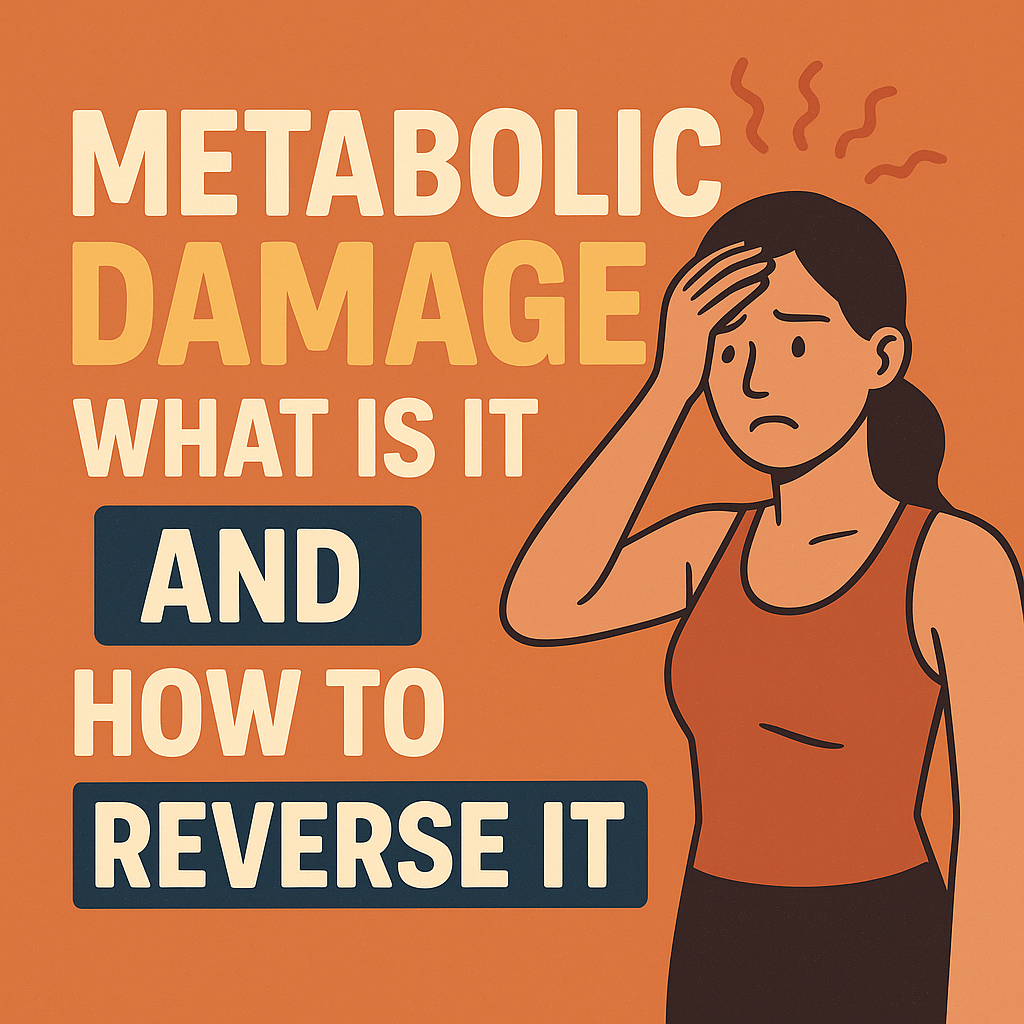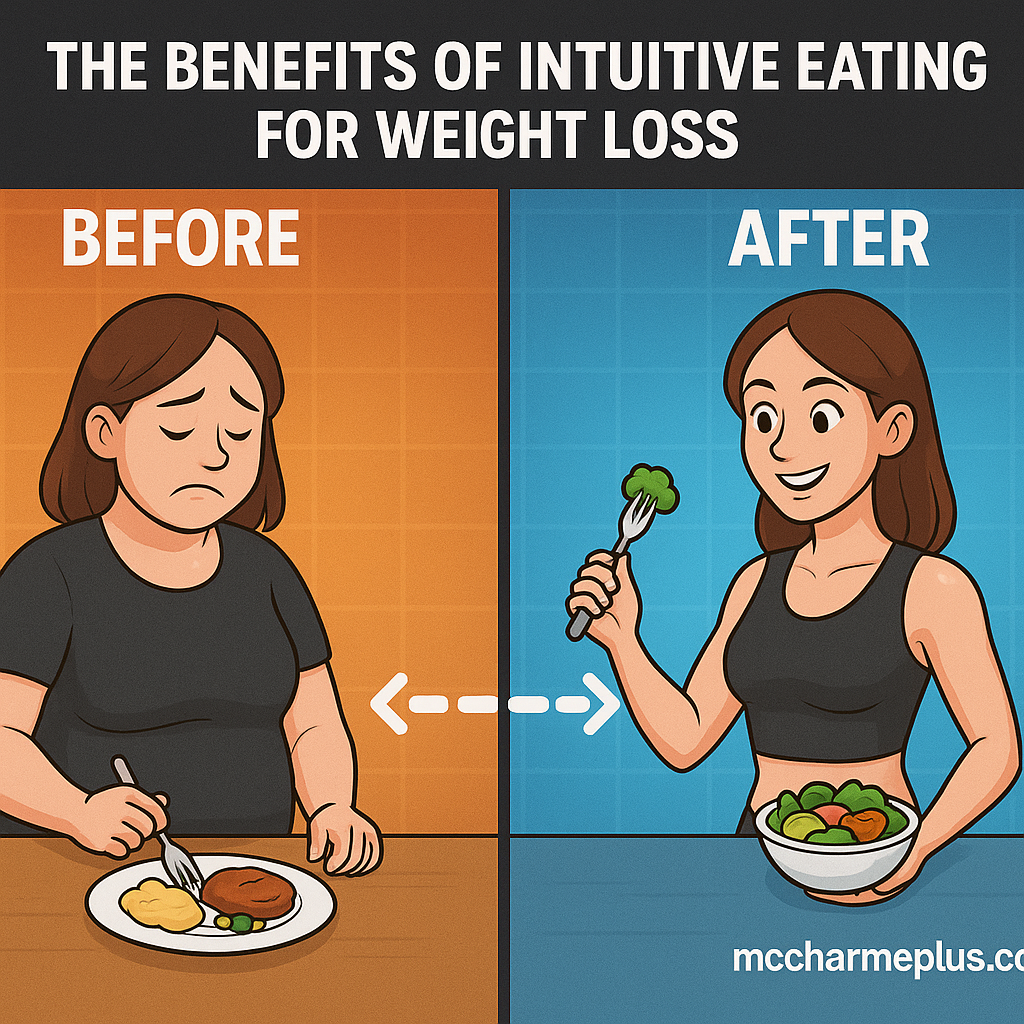Introduction
Metabolic damage is a growing concern in the fitness and weight loss community, affecting individuals who have struggled with weight loss or experienced a decline in their overall health.
Metabolic damage refers to the negative impact that certain lifestyle habits, such as crash dieting, excessive exercise, and chronic stress, can have on the body’s metabolic function.
This can lead to a range of symptoms, including a slow metabolism, weight gain, fatigue, and decreased overall health. In this article, we’ll provide an in-depth explanation of metabolic damage, its causes, signs, and symptoms, and most importantly, guidance on how to reverse it.
By understanding the physiological processes involved in metabolic damage and making informed lifestyle choices, individuals can take steps to restore their metabolic health and achieve their fitness and weight loss goals.
What is Metabolic Damage?
Metabolic damage, also known as metabolic slowdown or metabolic dysfunction, refers to the negative impact that certain lifestyle habits can have on the body’s metabolic function. This can lead to a range of symptoms, including:
Definition and Effects on the Body
Metabolic slowdown: A decrease in the body’s resting metabolic rate (RMR), making it more difficult to lose weight and maintain weight loss.
Insulin resistance: A decrease in the body’s ability to effectively use insulin, leading to increased blood sugar levels and weight gain.
Hormonal imbalances: Disruptions in hormone levels, including cortisol, thyroid, and leptin, which can affect metabolism, hunger, and weight regulation.
Physiological Processes Involved
Mitochondrial dysfunction: A decrease in the efficiency of the mitochondria, the energy-producing structures within cells, leading to decreased energy production and increased oxidative stress.
Inflammation: Chronic inflammation, which can lead to insulin resistance, metabolic slowdown, and weight gain.
Role of Diet, Exercise, and Stress
Diet: Consuming a diet that is high in processed foods, sugar, and unhealthy fats can contribute to metabolic damage.
Exercise: Engaging in excessive cardio or other forms of exercise can lead to metabolic slowdown and muscle loss.
Stress: Chronic stress can lead to hormonal imbalances, insulin resistance, and metabolic slowdown.
By understanding the physiological processes involved in metabolic damage, individuals can take steps to prevent and reverse this condition.
Signs and Symptoms of Metabolic Damage
Metabolic damage can manifest in different ways, and recognizing the signs and symptoms is crucial for early intervention. Some common signs and symptoms of metabolic damage include:
Slow Metabolism
Difficulty losing weight: Despite a healthy diet and regular exercise, weight loss may be challenging or impossible.
Weight gain: Unexplained weight gain, particularly around the midsection, can be a sign of metabolic damage.
Fatigue and Low Energy
Persistent fatigue: Feeling tired, sluggish, or lacking energy, even after getting enough rest and sleep.
Brain fog: Difficulty concentrating, memory problems, or decreased mental clarity.
Other Signs and Symptoms
Increased hunger and cravings: Feeling hungry soon after eating or experiencing intense cravings for unhealthy foods.
Digestive issues: Bloating, constipation, or other digestive problems can be related to metabolic damage.
Mood changes: Irritability, anxiety, or depression can be linked to metabolic damage.
Identifying Metabolic Damage
Tracking progress: Monitoring weight, measurements, and overall health markers can help identify potential issues.
Consulting a healthcare professional: If you’re experiencing several of these signs and symptoms, consult with a healthcare professional to determine the underlying cause.
By recognizing the signs and symptoms of metabolic damage, individuals can take proactive steps to address the issue and prevent further damage.
Causes of Metabolic Damage
Metabolic damage can be caused by a combination of factors, including:
Crash Dieting and Restrictive Eating
Severe calorie restriction: Drastically reducing calorie intake can lead to metabolic slowdown and muscle loss.
Restrictive eating patterns: Following overly restrictive diets or eliminating entire food groups can lead to nutrient deficiencies and metabolic damage.
Excessive Cardio and Exercise
Overdoing cardio: Engaging in excessive cardio or high-intensity exercise can lead to metabolic slowdown and muscle loss.
Insufficient recovery time: Not allowing for adequate recovery time between workouts can lead to chronic stress and metabolic damage.
Chronic Stress and Lack of Sleep
Chronic stress: Ongoing stress can lead to hormonal imbalances, insulin resistance, and metabolic damage.
Lack of sleep: Insufficient sleep or poor sleep quality can disrupt hormones, metabolism, and overall health.
Other Causes of Metabolic Damage
Medications and toxins: Certain medications and exposure to environmental toxins can contribute to metabolic damage.
Hormonal imbalances: Imbalances in hormones such as cortisol, thyroid, and leptin can affect metabolism and overall health.
Understanding the Causes of Metabolic Damage
Recognizing patterns: Identifying patterns of behavior or lifestyle habits that may be contributing to metabolic damage.
Making informed choices: Making informed choices about diet, exercise, and stress management can help prevent and reverse metabolic damage.
By understanding the causes of metabolic damage, individuals can take proactive steps to prevent and reverse this condition.
How to Reverse Metabolic Damage
Reversing metabolic damage requires a comprehensive approach that addresses diet, exercise, and stress management. Here are some strategies to help reverse metabolic damage:
Nutrition
Increasing caloric intake: Gradually increasing caloric intake to support metabolic function and weight gain.
Eating more protein: Consuming adequate protein to support muscle growth and repair.
Incorporating healthy fats: Adding healthy fats, such as avocados and nuts, to support hormone production and overall health.
Exercise
Incorporating strength training: Engaging in regular strength training to build muscle mass and increase metabolism.
Reducing cardio: Reducing or modifying cardio exercises to avoid excessive stress on the body.
Incorporating low-intensity activities: Engaging in low-intensity activities, such as yoga or walking, to promote relaxation and recovery.
Stress Management and Recovery
Practicing stress-reducing techniques: Engaging in stress-reducing activities, such as meditation or deep breathing, to manage stress.
Getting enough sleep: Prioritizing sleep and aiming for 7-9 hours per night to support recovery and hormone regulation.
Incorporating relaxation techniques: Engaging in relaxation techniques, such as yoga or progressive muscle relaxation, to promote recovery and reduce stress.
Other Strategies
Seeking professional guidance: Consulting with a healthcare professional or registered dietitian to develop a personalized plan.
Monitoring progress: Tracking progress and making adjustments as needed to support metabolic health.
Being patient: Recognizing that reversing metabolic damage takes time and patience, and being gentle with oneself throughout the process.
By incorporating these strategies into daily life, individuals can take steps to reverse metabolic damage and support overall health and well-being.
Conclusion
Metabolic damage is a common issue that can have significant effects on overall health and well-being. By understanding the causes and symptoms of metabolic damage, individuals can take proactive steps to prevent and reverse this condition.
Key Takeaways
Metabolic damage is reversible: With the right approach, it is possible to reverse metabolic damage and support overall health.
Nutrition and exercise are key: A balanced diet and regular exercise are essential for supporting metabolic health.
Stress management is crucial: Chronic stress can contribute to metabolic damage, and stress management techniques can help mitigate this effect.
Importance of Addressing Metabolic Damage
Overall health and well-being: Metabolic damage can have significant effects on overall health and well-being, making it essential to address.
Weight management: Reversing metabolic damage can help support weight loss and maintenance.
Increased energy and vitality: Addressing metabolic damage can lead to increased energy and vitality.
Next Steps
Seek professional guidance: Consult with a healthcare professional or registered dietitian to develop a personalized plan.
Start making changes: Begin making changes to diet, exercise, and stress management habits to support metabolic health.
Be patient and persistent: Reversing metabolic damage takes time and patience, so it’s essential to be gentle with oneself and stay committed to the process.
By taking proactive steps to address metabolic damage, individuals can support overall health and well-being, and achieve a healthier, more balanced lifestyle.




